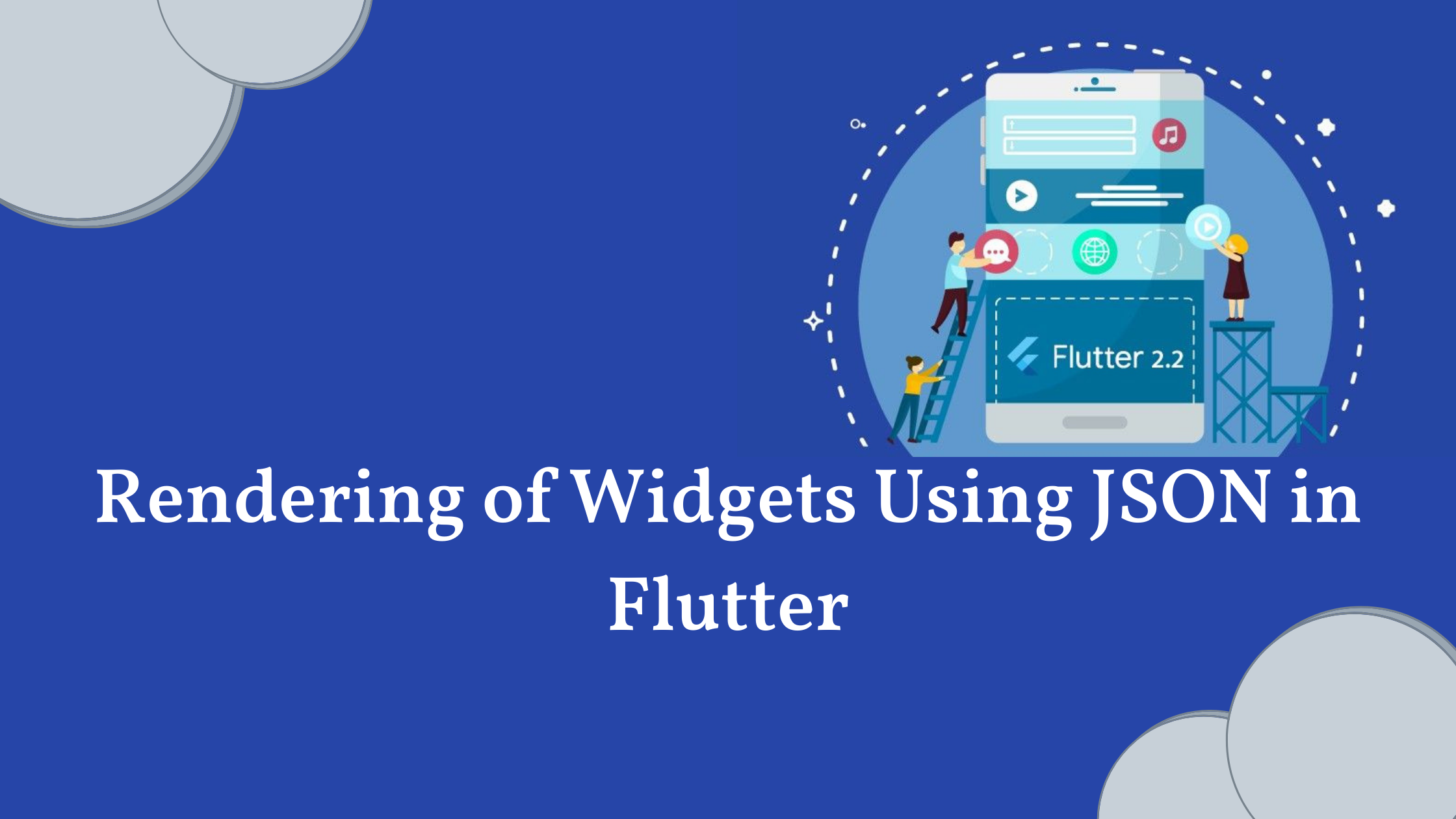Do you desire to comprehend how to render widgets the usage of JSON Data in flutter applications? Then this information lets you apprehend this notion very effectively. In general, flutter is Google’s open-source and free SDK — Software Development Kit for a number cross-stage cellular software enhancements.
Using the solitary stage rationalist codebase, right here flutter helps versatile functions with a brilliant person interface for iOS and Android, and builders advance ultimate execution. A devoted Flutter developer to execute the proper procedure when growing utility to get choicest overall performance from Flutter cell application. Flutter eventually relies upon on the library of pre-made widgets that can simplify them for folks with improvement journey or restrained programming to ship off the cell functions quickly.
The Dart/Flutter bundle supervisor has grow to be the exquisite wellspring of open-source code, thoughts, and libraries, from the community requests programs to the whole structure patterns. This weblog lets you discover the have an impact on of Flutter Rendering Widgets Using JSON Data. Then you can explore the system of enforcing a demo program.
Implementation:
Step 1: Add the dependencies
Add dependencies to pubspec — YAML file.
dependencies:
flutter:
sdk: flutter
json_dynamic_widget: ^5.0.0+2
It is required to add the networking package deal to convey information from the server API. Here, you can discover it the usage of the HTTP package,
http: ^0.13.4
Step 2:
import ‘package:json_dynamic_widget/json_dynamic_widget.dart’;
Step 3:
Running flutter packages get in the root directory of certain applications.
Procedure to implement code in dart file:
It is a need to for you to put in force it immediately in your code effectively:
At first, you want to rend the facts thru the sample.json file on the property folder. Then it would assist if you created the API for them and sooner or later can render such data.
Code.
{
“args”: {
“appBar”: {
“args”: {
“title”: {
“args”: {
“text”: “JSON UI Render — BOSC Tech labs”
},
“type”: “text”
}
},
“type”: “app_bar”
},
“body”: {
“child”: {
“type”: “network_image”,
“args”: {
“fit”: “cover”,
“src”: “https://pbs.twimg.com/profile_images/988629820459270145/o7cqbtfN_400x400.jpg"
}
},
“type”: “center”
}
},
“type”: “scaffold”
}
Create the new dart file known as main.dart around the lib folder.
Routing:
To configure the application, the URL routing regularly approves accepting the URLs. You can additionally use routing to outline the URLs, which are semantically significant to all users. The Flutter Application Web types additionally consist of severa options, and they even assist retain the records on an utility and per-page basis.
Security:
To impervious the application, internet types developed a impervious application. Microsoft additionally developed extraordinary methods to categorize the threats, which include repudiation, tampering, spoofing, Denial of Service, Information Disclosure, STRIDE (Elevation of Privilege), and so on. In a internet form, people can additionally add configuration picks and extensibility points, enabling customers to customise their safety behaviors.
Debugging:
The FLUTTER APPLICATIONS consist of some vital aspects of error dealing with and debugging. All are used to diagnose the problems. The error managing and debugging is nicely supported inside net forms. As a result, your software runs effectively.
Around the main.dart file, you have to create the RenderingWidget class. In that class, you first have to add Map <dynamic, dynamic=""> mapData comparable to the curly bracket. Also, you should have to create the var registry that is comparable to the JsonWidgetRegistry.instance.</dynamic,>
Map<dynamic, dynamic> mapData = {};
var registry = JsonWidgetRegistry.instance;
It would be nice to create the readJson() widget with the Future <map>. Then in that widget, you have to add the last String response comparable to the anticipate rootBundle.loadString (‘’your json file path‘). After that, you have to add the remaining records that is comparable to the wait for json.</map>
Future<Map> readJson() async {
final String response = await rootBundle.loadString(‘assets/sample.json’);
final data = await json.decode(response);
return data;
}
In the widget build, you must add the readJson() dot. After that, the value must be navigated to the mapData similar to the value. Then the var widget is similar to the JsonWidgetData.fromDynamic(mapData, registry: registry), and then returns the widget!.build(context: context).
@override
Widget build(BuildContext context) {
readJson().then((value) => mapData = value);
var widget = JsonWidgetData.fromDynamic(mapData, registry: registry);
return widget!.build(context: context);
}
This assist avoids complications, so you can shortly construct an application. In addition, it permits customers to focal point on respective components of the implementation. So you no want to waste your time on the software creation. You can without difficulty listen on the procedure primarily based on the enterprise logic.
The flutter sample is continually easy as nicely as easy. Apart from that, it makes all the methods easy, so you no want to get concerned about the complexities. With the assist of this, you can shortly take a look at purposes even if it helps the fine picks to take a look at flutter applications. These are the single-class purposes used to show output and consumer input.
Output:
Code:
import ‘dart:convert’;
import ‘package:flutter/material.dart’;
import ‘package:flutter/services.dart’;
import ‘package:json_dynamic_widget/json_dynamic_widget.dart’;
void main() {
runApp(const MyApp());
}
class MyApp extends StatelessWidget {
const MyApp({Key? key}) : super(key: key);
@override
Widget build(BuildContext context) {
return MaterialApp(
debugShowCheckedModeBanner: false,
theme: ThemeData(
primarySwatch: Colors.amber,
),
home: const RenderingWidget());
}
}
class RenderingWidget extends StatefulWidget {
const RenderingWidget({Key? key}) : super(key: key);
@override
_RenderingWidgetState createState() => _RenderingWidgetState();
}
class _RenderingWidgetState extends State {
Map<dynamic, dynamic> mapData = {};
var registry = JsonWidgetRegistry.instance;
Future
<map> readJson() async {
final String response = await rootBundle.loadString(‘assets/sample.json’);
final data = await json.decode(response);
return data;
}
@override
Widget build(BuildContext context) {
readJson().then((value) => mapData = value);
var widget = JsonWidgetData.fromDynamic(mapData, registry: registry);
return widget!.build(context: context);
}
}</map>
Conclusion:
From the state of affairs referred to above, now you can discover how to render widgets the usage of JSON Data in flutter applications. So why are you nonetheless waiting? Now you can rent Flutter builders to execute this process. Contact the extraordinarily reputed authorities at once to entire the venture on time.


